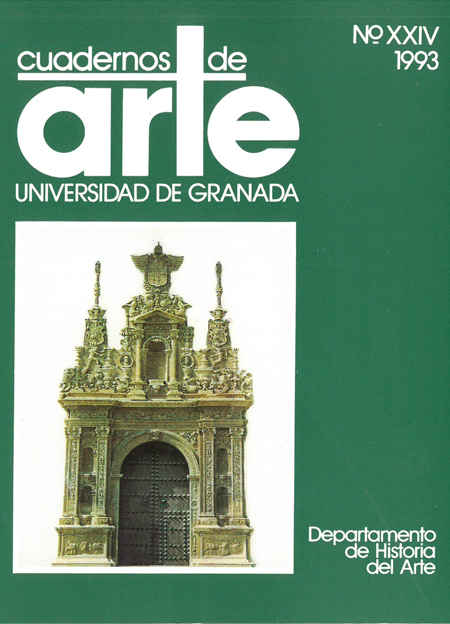Motivos decorativos en hueso. Objetos aparecidos en Campotéjar (Granada). Siglos XI-XIII
Resumen
Los materiales de hueso aparecidos en las tierras de Campotéjar, concretamente en el Cerro de Castellón, cerca del Puerto y de la Venta de Andar, nos permiten conocer el arte popular y sus decoraciones en los siglos XI-XIII. Varias piezas de hueso, que sirvieron como empuñaduras de armas o cuchillos, presentan un estado bastante bueno de conservación, aunque de la mayoría nos han llegado fragmentos. Su decoración y su valor artístico recuerda las industrias del marfil, de las que estamos bien informados y nos hace ver que el hueso era utilizado por las clases demenos pujanza económica (espátulas. agujas. botones, peines, etc.). Las piezas que presentamos tienen paralelos con otras del Museo de Murcia y que se han fechado en el siglo XII. En conjunto, los materiales de Campotéjar se fechan de los siglos XI a XIII, transición del rico mundo califal al período nazarí.
Descargas
Descargas
Publicado
1993-11-10
Cómo citar
Espinar Moreno, M., Quesada Gómez, J. J., Amezcua Pretel, J., & Gutiérrez, E. (1993). Motivos decorativos en hueso. Objetos aparecidos en Campotéjar (Granada). Siglos XI-XIII. Cuadernos De Arte De La Universidad De Granada, 11–20. Recuperado a partir de https://revistaseug.ugr.es/index.php/caug/article/view/10877
Número
Sección
Estudios
Licencia
Los autores que publican en esta revista están de acuerdo con los siguientes términos:- Los autores conservan los derechos de autor y garantizan a la revista el derecho de ser la primera publicación del trabajo al igual que ser licenciado bajo una licencia Creative Commons que permite a otros compartir el trabajo con un reconocimiento de la autoría del trabajo y la cita de la fuente original, con un uso no comercial y siempre que no se hagan obras derivadas.
- Los autores pueden establecer por separado acuerdos adicionales para la distribución no exclusiva de la versión de la obra publicada en la revista (por ejemplo, situarlo en un repositorio institucional o publicarlo en un libro), con un reconocimiento de su publicación inicial en esta revista.
- Se permite y se anima a los autores a difundir sus trabajos electrónicamente (por ejemplo, en repositorios institucionales o en su propio sitio web) antes y durante el proceso de envío, ya que puede dar lugar a intercambios productivos, así como a una citación más temprana y mayor de los trabajos publicados (Véase The Effect of Open Access) (en inglés).


 ISSN-e: 2445-4567
ISSN-e: 2445-4567








